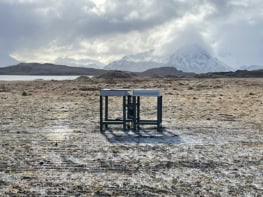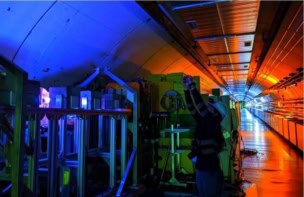
Officials from 15 countries have met in Rome today to create an intergovernmental governing body for the Square Kilometre Array (SKA) – the huge radio telescope that is under construction in South Africa and Australia. At the meeting at the Italian Ministry of Research and Education, seven countries – Australia, China, Italy, the Netherlands, Portugal, South Africa and the UK – signed a convention to create the Square Kilometre Array Observatory. SKA officials are hopeful that the six remaining participating members of the SKA – Canada, France, India, Sweden and New Zealand – will sign the convention at a later date.
The SKA will consist of hundreds of radio dishes and thousands of antennas that will be spread out across thousands of kilometres in both Australia and southern Africa. It will aim to study gravitational waves, investigate the nature of fast-radio bursts, map hundreds of millions of galaxies as well as look for signs of life in the universe.
Rome wasn’t built in a day. Likewise, designing, building and operating the world’s biggest telescope takes decades of efforts
Catherine Cesarsky
All the signatories in Rome will now become founding members of the SKA Observatory. As an intergovernmental organization, the SKA Observatory will be equivalent to the CERN particle-physics laboratory near Geneva and the European Southern Observatory and will oversee building and operating the SKA telescopes over the next 50 years. A SKA for astronomy
For the SKA Observatory to come into existence, however, the convention will first need to go through national parliaments to be ratified. That process varies depending on the country, but it is expected to take between 12 and 15 months according to SKA spokesperson William Garnier from the SKA’s headquarters at the Jodrell Bank Observatory near Manchester, UK. The SKA Observatory could then come into force by mid-2020. In the meantime, other countries that have not yet taken part in formal negotiations to form the SKA Observatory could do so.
“Rome wasn’t built in a day,” says Catherine Cesarsky, chair of the SKA board of directors. “Likewise, designing, building and operating the world’s biggest telescope takes decades of efforts, expertise, innovation, perseverance, and global collaboration. Today we’ve laid the foundations that will enable us to make the SKA a reality.”
Data deluge
Nine multinational consortia are now finalizing the SKA’s design, which is expected by the end of the year. From late 2020, around €700m of contracts to build SKA are expected to be awarded to companies in SKA member countries, which marks the start of construction for the first phase of the project. When the SKA begins science operations by the mid-2020s, it will generate some 600 petabytes of data every year that will be processed by two supercomputers.
“The SKA project is not only about astronomy but also about pushing the boundaries of computing and technology,” says Anna Scaife, from the Jodrell Bank Centre for Astrophysics in the UK. “Signing the treaty for the SKA brings us closer to answering some of the most important questions in advancing our understanding of the universe.”



